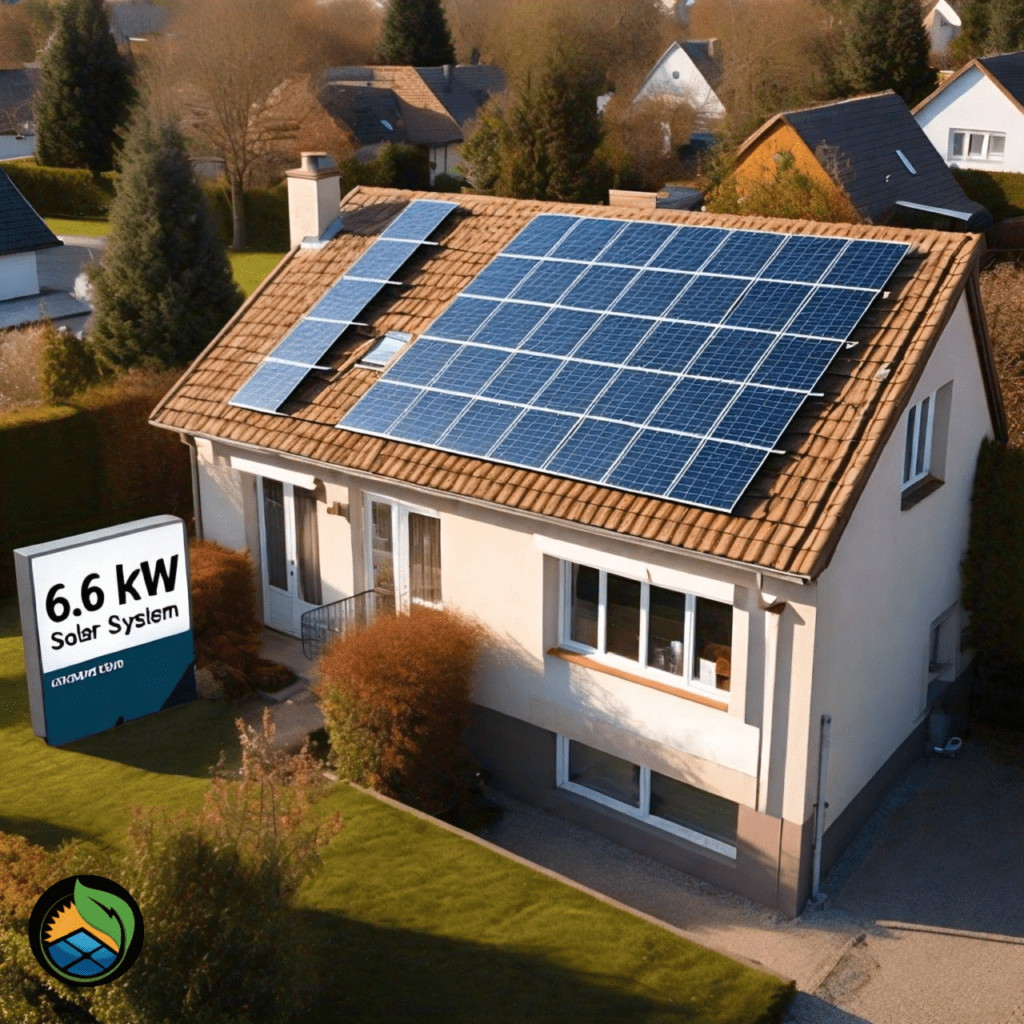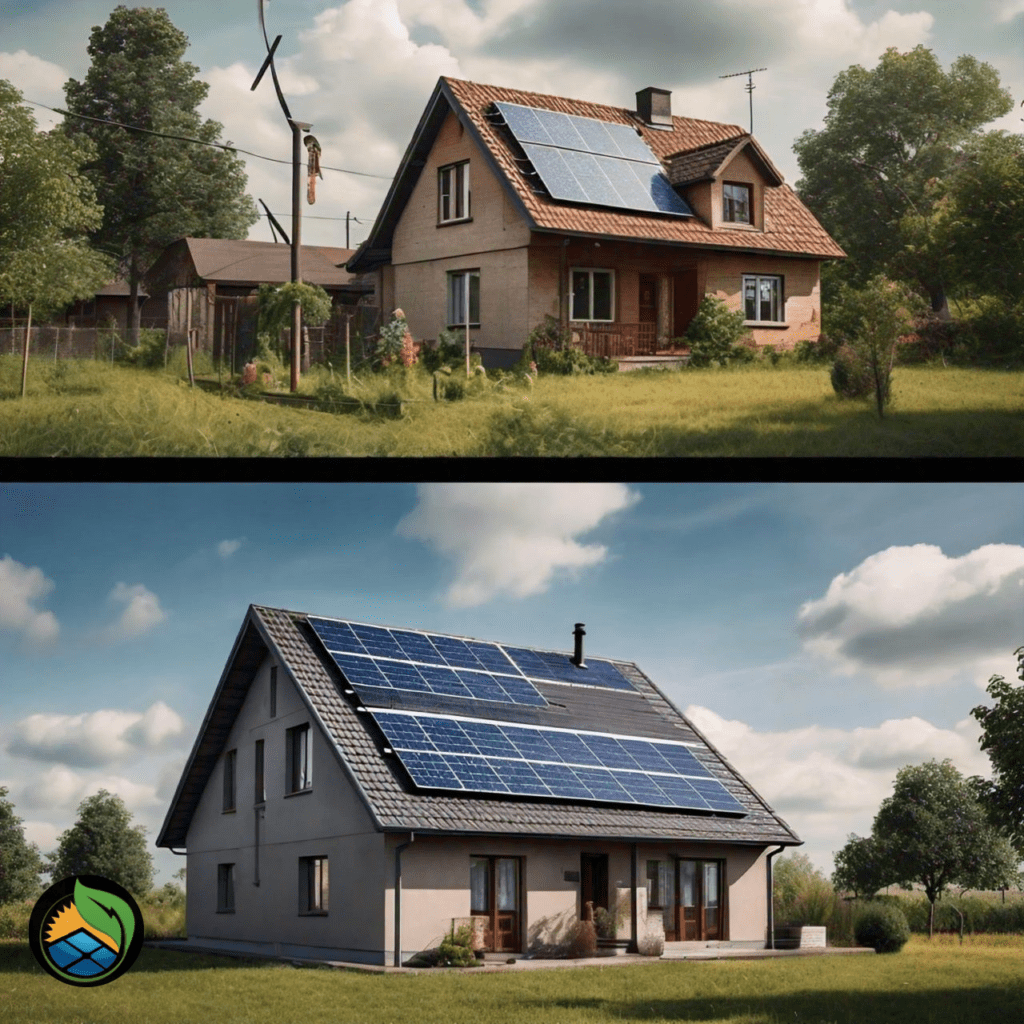This comprehensive guide dives deep into the world of 6.6 kW solar systems, ensuring you have all the information needed to make an informed decision.
Interest in solar energy has skyrocketed as homeowners and sustainability enthusiasts alike seek greener alternatives to traditional electricity sources. One of the most popular options for residential homes is installing a 6.6 kW solar system, which promises a significant reduction in electricity bills while contributing to a cleaner planet. But just how much energy does a system of this size produce? And what are the factors, costs, and payback periods involved?
Understanding Solar Energy Production
Production of solar energy is completely changing the way we power our houses, but understanding its mechanics is essential before making any investments. Photovoltaic (PV) panels in a 6.6 kW solar system turn sunshine into power for lighting and home appliances. Location, panel orientation, and shade presence are only a few of the important variables that affect the quantity of energy generated.
With the goal of demystifying solar energy production for the typical homeowner, this section investigates these factors

Factors Affecting Energy Output of a 6.6kW System
A 6.6 kW solar system can provide somewhat different outputs based on things like the efficiency of the solar panels, the local environment, and the particulars of the installation. For example, the efficiency of the system will rise with panels pointing south in the Northern Hemisphere. An important factor is also seasonal variations; longer summer days provide more power. This part of the book clarifies these points and helps prospective solar adopters optimize the energy output of their system.
Panels and Space Requirements for a 6.6kW System
Choosing the right panels and assigning enough space are crucial elements in efficiently harvesting the sun’s energy. A 6.6 kW system typically requires 20-24 panels and 400-600 square feet of roof area. Panel size, kind, and roof arrangement will all influence the installation process. This chapter provides information on selecting appropriate panels and understanding the spatial requirements of a 6.6 kW solar system.

Inverters for 6kW/6.6kW Solar Systems
Inverters are essential components of solar systems because they transform the direct current (DC) generated by solar panels into alternating current (AC), which operates the majority of household appliances. There are various varieties of inverters available, each with their own set of advantages. String inverters, microinverters, and hybrid inverters are among the alternatives discussed here, assisting readers in selecting the best match for their 6.6 kW system.
Cost of a 6.6kW Solar System
The cost of installing a 6.6 kW solar system has decreased, but it remains a hefty investment. Prices might range depending on component quality, installation complexity, and available subsidies. Here, we break down the prospective expenditures, providing a more accurate picture of what to expect when budgeting for a solar system of this size.
Total Power Output of a 6.6kW Solar System
The energy yield of a 6.6 kW solar system can be large, offsetting much of a household’s electrical consumption. Depending on the aforementioned conditions, such a system can yield 9,000 to 12,000 kWh per year. This section puts these data into context, indicating how much of your home’s energy requirements can be met with solar power.
Using Online Solar Calculators
Online solar calculators have proven to be helpful tools for evaluating the expected performance of a solar system. These calculators can project the energy output and potential savings if you provide precise information about your home and planned system. This discussion walks readers through the usage of these calculators, improving their ability to forecast the advantages of a 6.6 kW solar system.
Comparing Production to Your Energy Needs
To get the most out of your solar investment, compare its output to your real energy requirements. This comparison can indicate options for enhanced efficiency, such as changing appliance settings or boosting home insulation. This section encourages readers to carry out this analysis, which aligns solar energy output with consumption trends.
Adding Batteries to a 6.6kW System
The addition of battery storage devices can transform a 6.6 kW solar system from simply lowering electricity prices to offering energy independence. Batteries store excess power for use during periods of low sunshine, thus reducing reliance on the grid. This section looks at the advantages of battery storage, including the logistics and benefits of adding batteries to your solar system.
Payback Period for a 6.6kW Solar System
One of the most appealing parts of solar power is the payback period, which is the time it takes for energy savings to equal the initial system cost. The system’s cost, available incentives, and energy production all have an impact on this time span. Here, we look at how to calculate the payback period for a 6.6 kW system, emphasizing the long-term financial benefits of solar energy.
FAQs
How much power does a 6.6 kW solar system generate?
The energy output of a 6.6 kW solar system can vary depending on factors such as panel efficiency, location, and seasonal changes. On average, it can generate between 9,000 to 12,000 kWh annually.
How much does a 6kW solar system produce per day?
The daily production of a 6kW solar system can vary, but on average it can generate between 24 to 30 kWh. This amount can be impacted by factors such as weather conditions and the orientation of the panels.
Is 6 kW enough to run a house?
The energy needs of a household can vary, but on average a 6 kW solar system can cover the electricity consumption of a typical home. However, it is important to consider factors such as the number of residents and their energy usage habits.
How many AC units can run in a 6kW solar system?
The number of air conditioning units that can be powered by a 6kW solar system can vary depending on the size and energy efficiency of the units. On average, a 6kW solar system can run between 1 to 2 AC units.
Can I run a 1.5 ton AC on solar?
Yes, it is possible to power a 1.5 ton air conditioning unit with a solar system. However, the number of panels and overall system size needed may vary depending on factors such as location and energy usage patterns.
Conclusion
Investing in a 6.6 kW solar system can result in significant energy and cost savings, but understanding the complexities is critical to maximizing those benefits. This tutorial has covered the factors that influence solar energy output, installation considerations, and prospective expenses. Use this information as a helpful resource when researching the world of solar energy, knowing that you have all of the knowledge you need to make an informed decision.

